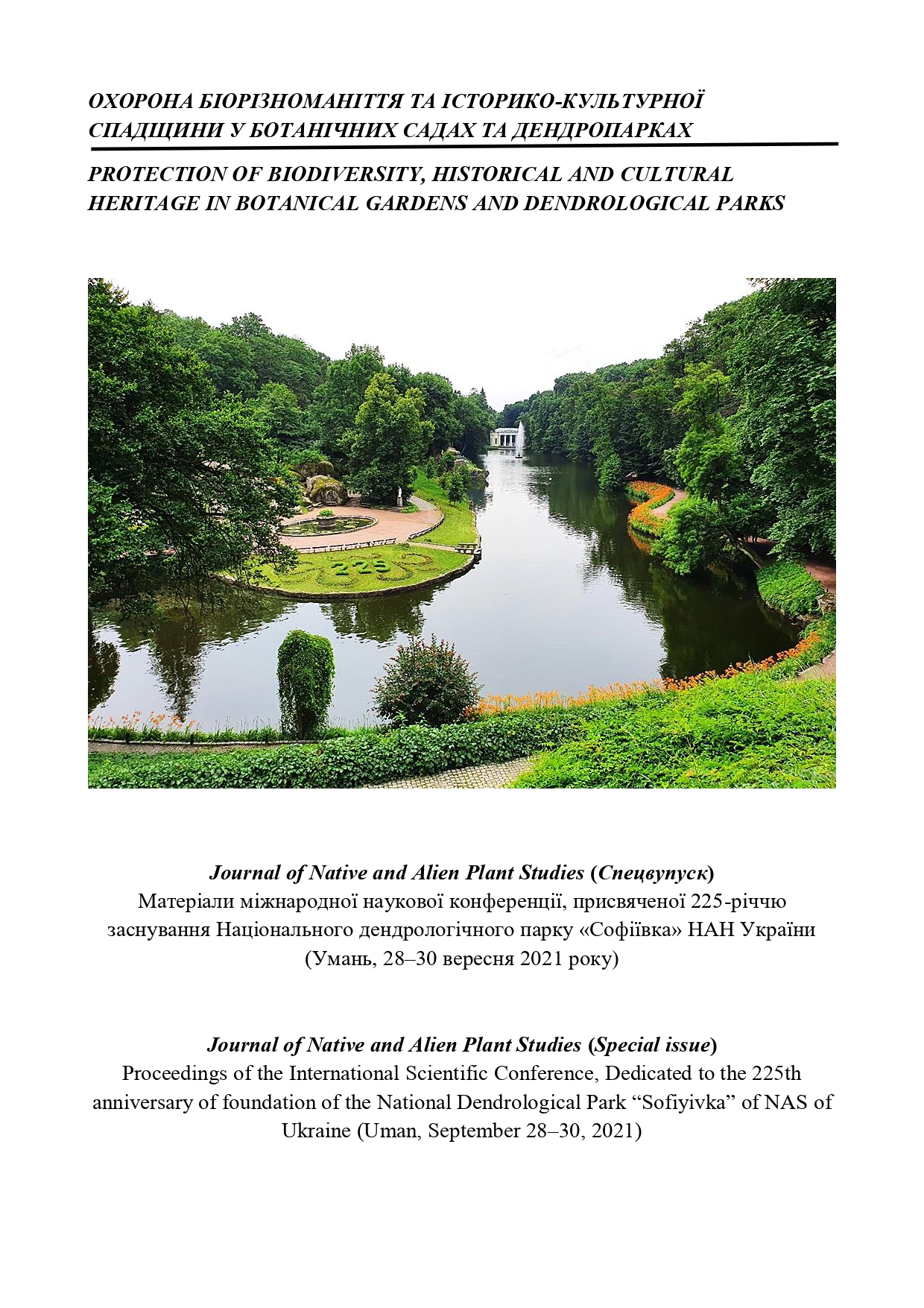Fruit and seed morphology in some representatives of the genus Malus Mill.
DOI:
https://doi.org/10.37555/2707-3114.1.2021.247567Keywords:
яблуня, плодоношення, біометричні показники, репродуктивна здатність.Abstract
Aim. The study of morphological characteristics of fruits and seeds of the genus Malus is the key to the effective use of the apple genetic diversity in landscape-gardening, fruit growing, introductory and breeding. Methods. Morphological features of fruits and seeds of nine species and three varieties of apple (M. baccata, M. coronaria ‘Red Tip’, M. floribunda, M. fusca, M. halliana, M. niedzwetzkyana, M. × purpurea, M. × purpurea ‘Ola’, M. × purpurea ‘Royalty’, M. × purpurea ‘Selkirk’, M. trilobata, M. tschonoskii, M. toringoides) were studied. Generally accepted tech- niques of research was used. Results. The fruit weight of apple species and varieties varied from 0.30 g (M. fusca) to 61.20 g (M. coronaria ‘Red Tip’), the weight of 1000 seeds — from 5.00 g (M. fusca) to 62.77 g (M. coronaria ‘Red Tip’). The largest number of seeds in the fruit was characteristic of M. toringoides (6.64), the smallest — M. tschonoskii (0.25); developed seeds were not detected in the fruits of M. trilobata for 2019–2020 years. The lowest level of variability among biometric indicators of the studied representatives of the genus Malus was in terms of fruit height, fruit diameter and seed height, the highest — in terms fruit weight and number of seeds in the fruit. Conclusions. Detailed characteristics of fruits and seeds of the genus Malus, growing in the National Dendrological Park “Sofiyivka”, were compiled as a result of research. The obtained data can be used as a supplement to the botanical characteristic, and as a comparative material for taxonomy and phylogeny.
Downloads
Published
How to Cite
Issue
Section
License

This work is licensed under a Creative Commons Attribution-ShareAlike 4.0 International License.
The names and email addresses entered in this journal site will be used exclusively for the stated purposes of this journal and will not be made available for any other purpose or to any other party.
Responsibility for technical content and for protection of proprietary material rests solely with the author(s) and their organizations and is not the responsibility of the publisher, journal or its Editorial Staff.
The main author is responsible for ensuring that the article has been seen and approved by all the other authors.
It is the responsibility of the author to obtain all necessary copyright release permissions for the use of any copyrighted materials in the manuscript prior to the submission.

